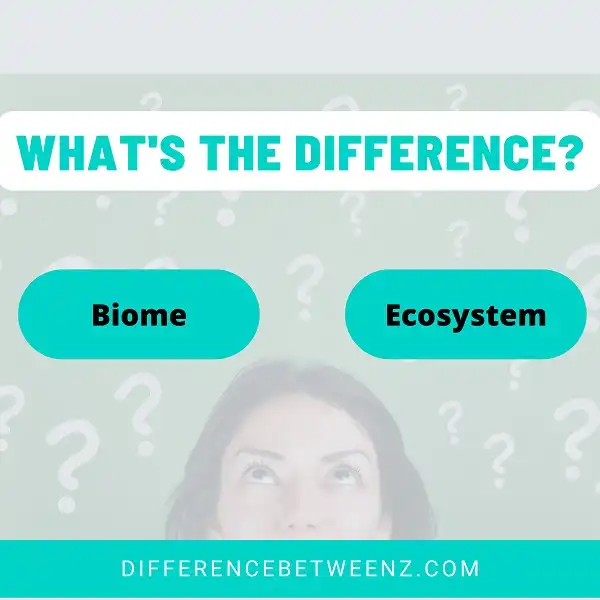Biome Vs. Ecosystem
What is the Difference between Biome and Ecosystem? In Ecology there are two very important terms that are often used interchangeably.
“Biome” and “ecosystem” often overlap, however, these concepts have meanings and describe different realities.
Biomes occupy a large scale, while ecosystems include a number of elements. Below this post is all about the Difference between Biome and Ecosystem.
A biome is a large vegetation community and wildlife adapted to a specific climate.
In order words, A biome is a large collection of fauna and flora adapting and flourishing in a major-specific habitat.
There are five major types of biomes
- Aquatic
- Grassland
- Forest
- Desert
- Tundra
Difference Between Biome And Ecosystem
Biome
It is an ecosystem-related concept, it refers to a territory (the abiotic factor) in which there exists a large-scale community of organisms,
which share the same environmental conditions, such as climate and geology.
Biomes comprise a set of ecosystems. They usually get their name depending on predominate vegetation association; for example house monsoon, rainforest and tundra.
A biome is a more general or global category than an ecosystem; as it covers many smaller-scale ecosystems.
People usually say that the rainforest (in a general sense, from South America to Southeast Asia) is a biome,
but if we refer to the rainforest of the Amazon Region, we are talking about an ecosystem, since the latter would be part of a larger set.
In addition, in this zone, the characteristics of the species, hydrology, or other factors are different from those that can be given in other tropical forests.
Ecosystem
It is an interactive community of organisms, which interact with their physical environment or abiotic environment.
The main function of these types of systems is to capture and distribute nutrients in a kind of life cycle. For this reason, ecosystem organisms depend on each other.
Plants feed on sunlight and at the same time, animals feed on plants; however, there are ecosystems at all scales: as in the case of microscopic bacterial communities.
The organisms that contribute to this system along with the abiotic elements, like the minerals and the light of the sun; are usually classified depending on their methods for obtaining energy.
In this way, plants of green leaves that feed on the sun and therefore, are photosynthetic organisms; they are called “producers”.
Animals that eat plants as known as “primary consumers”, to predators that feed on other animals; “Secondary consumers” and finally, the “decomposers”; which decompose after death, both producers and consumers.
Another more basic model simply divides organisms into “autotrophs”: those that produce their own energy or food and “heterotrophs: those that cannot and depend on other organisms to survive.
The Key difference between ecosystem and biome
The Key difference between ecosystem and biome is A biome has to do with the abiotic environment (climate, territory, geology), while an ecosystem involves the biotic element (animals, organisms, flora).
The biome is a higher category comprising a set of ecosystems.


